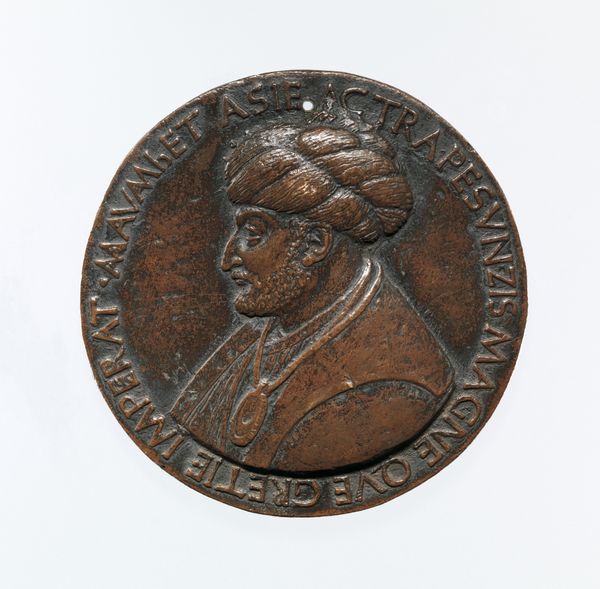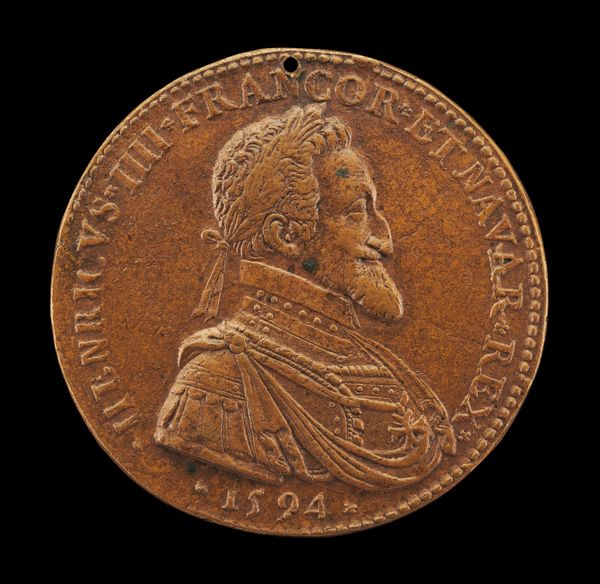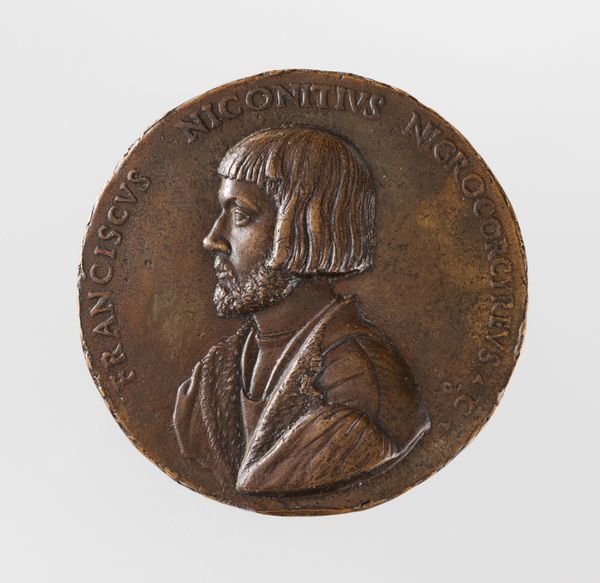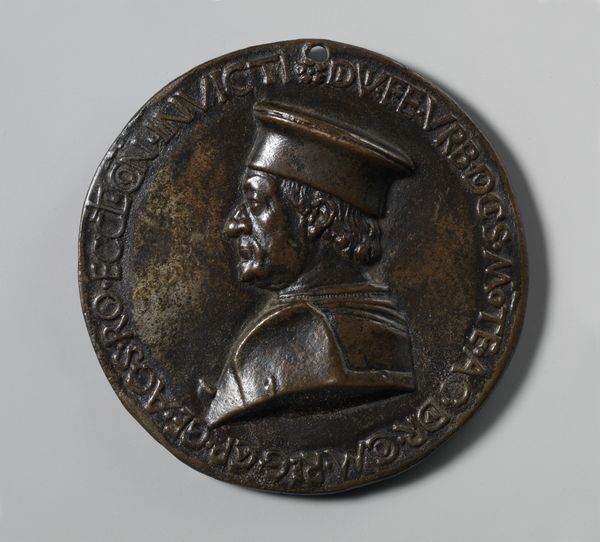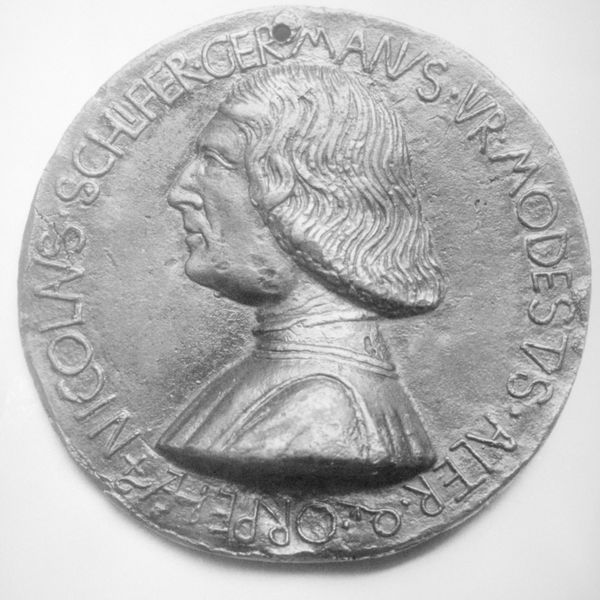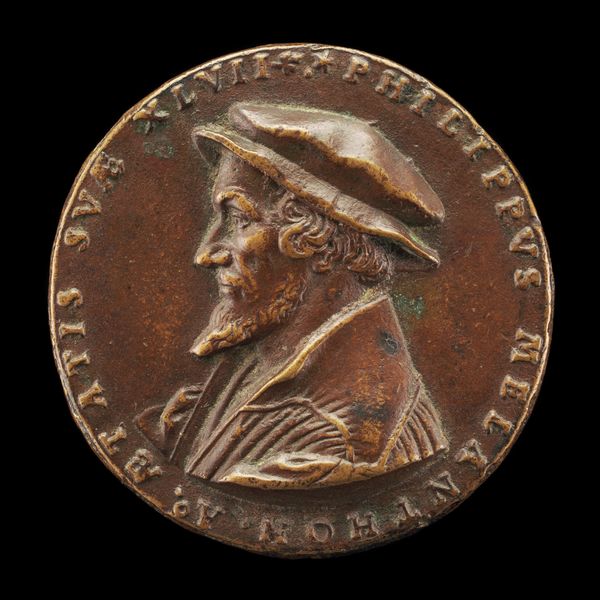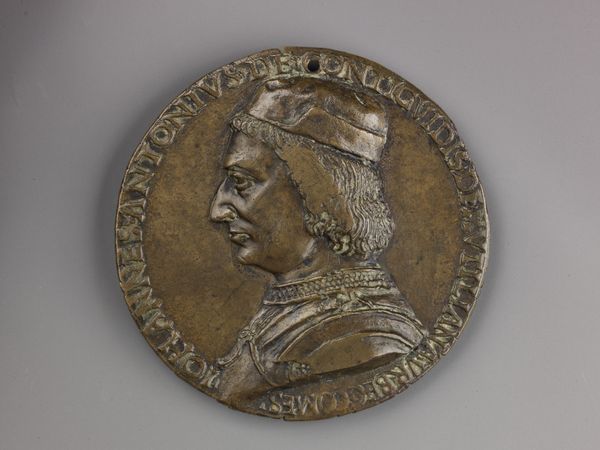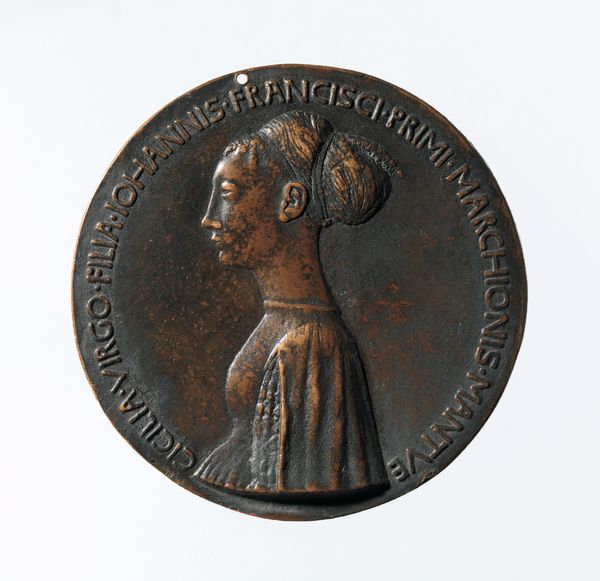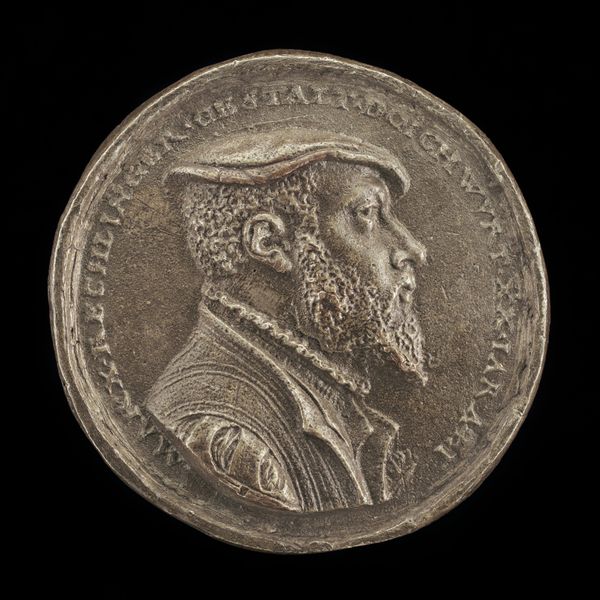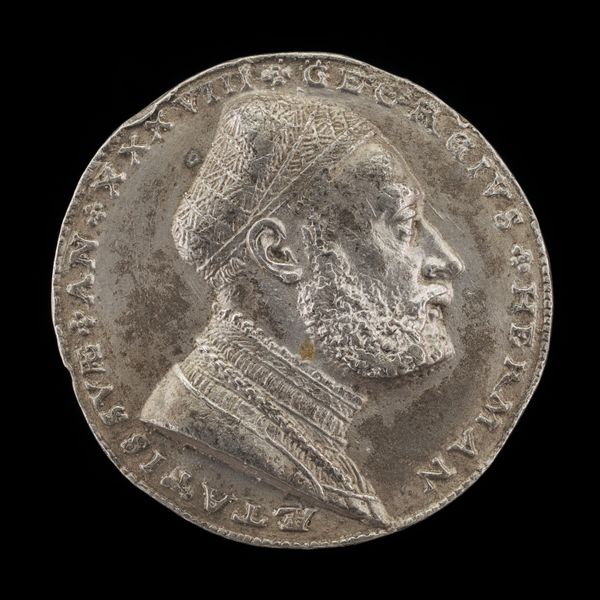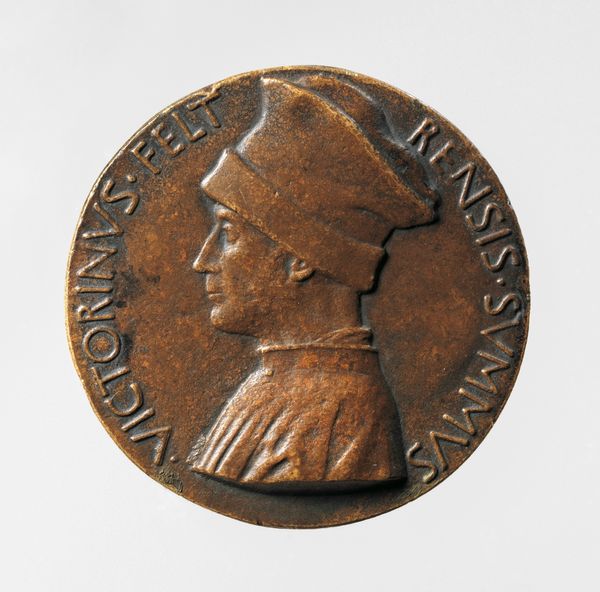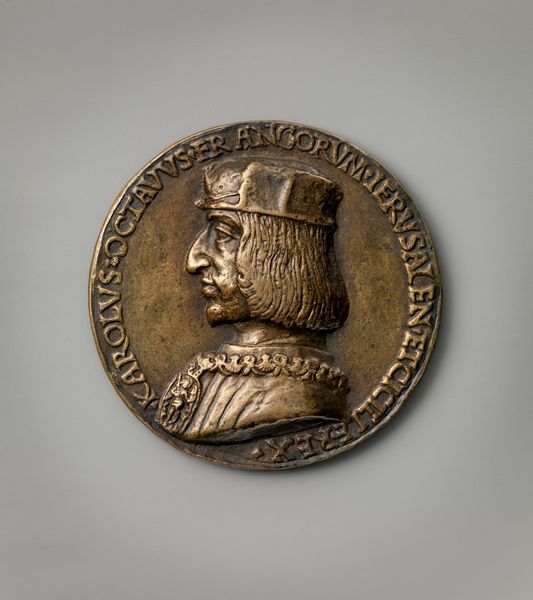
Portrait medal of Paolo Giovio (obverse); Giovio Raising a Man from a Grave (reverse) 1552
0:00
0:00
metal, bronze, sculpture
#
portrait
#
medal
#
metal
#
sculpture
#
bronze
#
sculpture
#
italian-renaissance
#
profile
Dimensions: Diameter: 3 3/4 in., 38.61g (9.5 cm)
Copyright: Public Domain
Curator: What a somber little disc. Bronze, right? It has the solemn weight of something significant… weighty with meaning, wouldn't you say? Editor: Indeed. This is a portrait medal of Paolo Giovio, crafted in 1552 by Francesco da Sangallo. The obverse side shows Giovio in profile, and, rather intriguingly, the reverse depicts Giovio raising a man from a grave. Bronze was a popular material for medals during the Italian Renaissance. The imagery speaks to a renewed interest in classical themes alongside the development of portraiture. Curator: Raising a man from a grave! Bit dramatic, no? A self-aggrandizing detail? Perhaps Giovio felt like *he* was doing all the lifting. As if his mere existence was enough to breathe life into others. I wonder what Giovio was like, or rather, what he *thought* he was like. Editor: Giovio was a historian and biographer. One could suggest that by documenting the lives of others, Giovio saw himself as preserving—even resurrecting—their legacies for posterity. It certainly seems rooted in the period's broader humanist project, focused on individual achievement. The act of 'raising from the grave' can symbolize giving prominence and meaning to a life through historical record. This intersects, notably, with deeply held religious beliefs of that period, making for powerful symbolism. Curator: Oh, definitely. This isn’t just portraiture, is it? It’s an assertion of power, almost. It gives him authority, both on earth, and somewhere beyond. And look at the detailing. You know, Sangallo really captured this... this sense of dignified self-importance. But it is touching, somehow. There’s vulnerability too. Editor: Exactly. Considering the historical context allows us to engage more meaningfully with artworks that seem straightforward at first glance. An object like this, ostensibly intended to celebrate an individual, invites layered perspectives regarding identity and legacies in the 16th century. Curator: I love that: legacies in bronze. You carry it with you, this dense little declaration. What a story, literally etched in metal! Editor: It's these interwoven aspects of artistic skill, historical moment, and societal meanings that provide a deeper, multifaceted engagement with a work of art, sparking questions about our world and the ways in which humans have sought to impact and memorialize it through various avenues of creation.
Comments
No comments
Be the first to comment and join the conversation on the ultimate creative platform.
